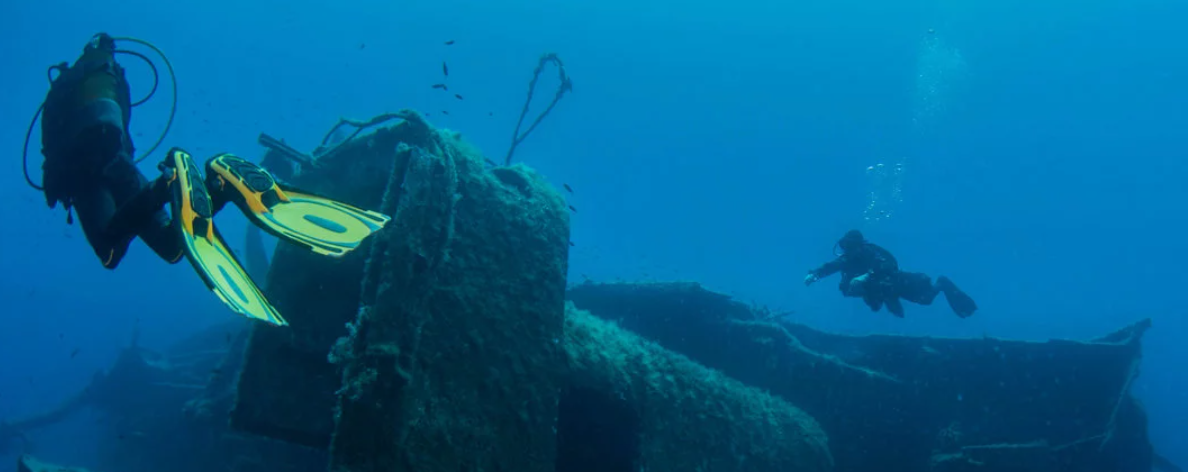Crete, the largest of the Greek islands, is renowned for its rich history, stunning landscapes, and vibrant culture. However, one of its most fascinating treasures lies beneath the waves: the island’s underwater archaeological sites. These submerged relics offer a unique glimpse into Crete’s ancient past, revealing secrets about its maritime heritage, trade networks, and everyday life. Exploring these underwater sites is a thrilling adventure that combines the allure of archaeology with the beauty of the Mediterranean Sea.
The Significance of Crete’s Maritime Heritage
Crete’s strategic location in the Mediterranean has made it a crossroads of civilizations for millennia. The island’s history is deeply intertwined with the sea, from the ancient Minoan civilization, which thrived from around 2700 to 1450 BCE, to the later Greek, Roman, Byzantine, and Venetian periods. The sea was a vital conduit for trade, cultural exchange, and military activities, and many remnants of these interactions are now found underwater.
Key Underwater Archaeological Sites
1. Pavlopetri:
Although technically off the southern coast of Laconia, Greece, Pavlopetri is closely related to Cretan maritime history. Dating back to around 3000 BCE, Pavlopetri is one of the oldest submerged cities in the world. The site features well-preserved streets, buildings, and tombs, providing invaluable insights into early urban planning and the everyday lives of its inhabitants. Pavlopetri’s proximity to Crete and its role in regional trade make it a significant site for understanding the broader context of Aegean maritime history.
2. Olous:
Located near the modern town of Elounda in eastern Crete, the ancient city of Olous was a thriving port during the Minoan and Hellenistic periods. Today, the remnants of Olous lie beneath the clear waters of the Mirabello Bay. The submerged ruins include parts of city walls, buildings, and a harbor. Olous is particularly intriguing because it offers a glimpse into the infrastructure and daily life of a bustling ancient port city. Snorkelers and divers can explore the site, where the outlines of streets and structures are still visible.
3. Heraklion Port:
The ancient port city of Heraklion (not to be confused with the modern city of Heraklion) was an important center during the Minoan period. Submerged relics near the present-day Heraklion harbor include shipwrecks, pottery, and remnants of harbor structures. These finds highlight the city’s role in maritime trade and its connections with other ancient civilizations around the Mediterranean. Diving expeditions in this area can reveal a wealth of artifacts that shed light on the Minoan’s seafaring capabilities and economic activities.
4. Ancient Shipwrecks:
Crete’s waters are dotted with ancient shipwrecks, each telling a unique story about the island’s maritime past. Notable wrecks include Roman and Byzantine ships, which carried cargoes of amphorae, pottery, and other goods. These shipwrecks are time capsules, preserving their contents and offering insights into ancient trade routes, shipbuilding techniques, and the commodities that were valuable during different periods. Diving to these sites allows explorers to see firsthand the remains of ancient seafaring vessels and their cargoes.
The Experience of Exploring Underwater Sites
Exploring Crete’s underwater archaeological sites is a captivating experience that combines the thrill of diving with the excitement of discovery. These dives require a mix of archaeological curiosity and diving skills, making them suitable for both amateur and professional divers with an interest in history.
Preparation and Safety
Before embarking on an underwater archaeological adventure, divers should ensure they have the necessary training and certification. Many diving centers on Crete offer specialized courses in underwater archaeology, providing the skills needed to safely explore and appreciate these sites. It’s also essential to be aware of and respect local regulations regarding diving and the protection of archaeological sites.
Guided Tours and Expeditions
Several organizations and diving schools offer guided tours to Crete’s underwater archaeological sites. These tours are led by experienced guides who provide valuable context about the sites’ historical significance and the artifacts found there. Guided tours enhance the experience by combining expert knowledge with safe diving practices, allowing participants to fully appreciate the underwater heritage.
Conservation and Protection
Preserving underwater archaeological sites is crucial for maintaining Crete’s cultural heritage. Divers are encouraged to follow responsible diving practices, avoiding touching or disturbing artifacts and structures. Reporting any new finds to local authorities helps protect these sites for future generations. Efforts by local and international organizations aim to balance the promotion of underwater tourism with the need to conserve these invaluable historical resources.
Conclusion
Exploring Cretan underwater archaeological sites offers a unique and thrilling way to connect with the island’s rich history and maritime heritage. From ancient submerged cities to well-preserved shipwrecks, these sites provide a fascinating glimpse into the past, revealing the intricate web of trade, culture, and daily life that shaped Crete over millennia. Whether you are a seasoned diver or a history enthusiast, the underwater treasures of Crete promise an unforgettable adventure that blends the wonders of the sea with the mysteries of ancient civilizations.


